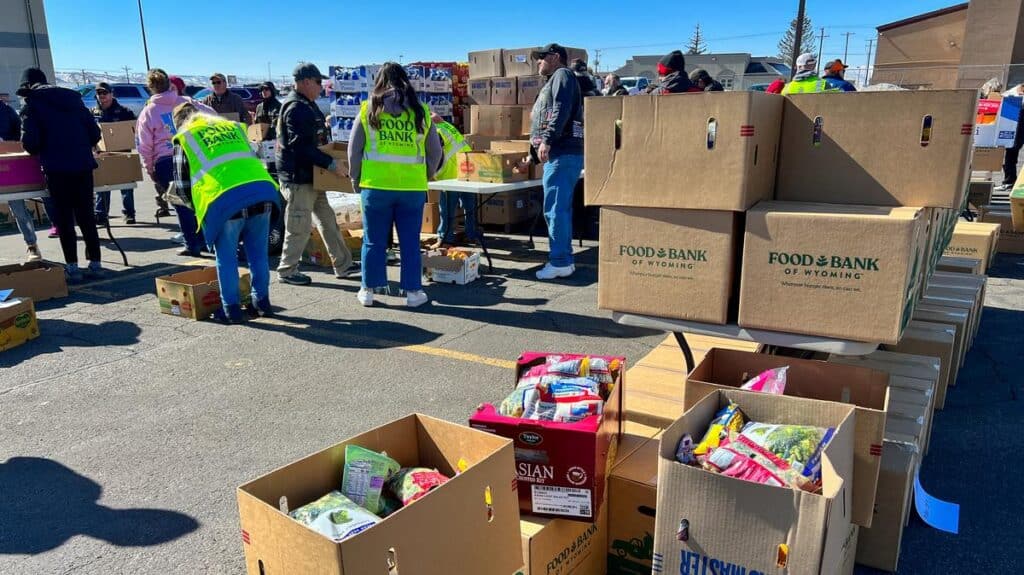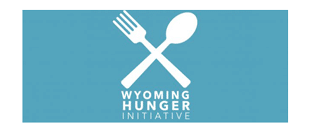
Food insecurity is a vast and complicated public health issue, intertwining with poverty and a variety of other medical and social conditions to negatively impact the lives of millions of Americans.
Food insecurity is associated with numerous negative mental and physical health outcomes for all age groups but is especially dire in more vulnerable populations like children and older adults. Food insecurity is also a societal problem, negatively reinforcing racial and ethnic disparities by affecting Black and Latino households at disproportionate rates.
We’ll explore the scope of food insecurity’s impact on our country — and ways that you can help combat it — by answering key questions below.
What is food insecurity?
Food security is a spectrum of conditions ranging from unlimited access to disrupted eating and reduced food intake. The USDA defines this spectrum as four different ranges of food security:
High Food Security: Households without any food access problems or limitations
Marginal Food Security: Households that experience a limited amount of anxiety about food access or sufficiency, but haven’t experienced dietary changes or lack of food intake
Low Food Security: Households that experience a consistent reduction in dietary quality, variety, nutritional value, and desirability, but do not experience reduced food intake
Very Low Food Security: Households that experience consistently disrupted eating patterns and reduced food intake.
Households that experience low food security and very low food security are collectively considered to be food insecure by the USDA.
How many people in the U.S. experience food insecurity?
In 2021, 13.5 million households (10.2%) experienced food insecurity, according to the USDA, and 5.1 million households (3.8%) experienced very low food security.
How is food insecurity different from hunger?
Hunger is a physiological condition with symptoms ranging from discomfort to weakness, illness, and pain. Hunger is a potential consequence of food insecurity, which is an economic and social condition.
Why is food insecurity a problem for public health?
Food insecurity is a public health issue because it is associated with numerous, sometimes life-threatening health conditions across all age ranges, and its negative effects can be especially felt by children and older adults.
According to the HealthAffairs report Food Insecurity And Health Outcomes, food insecurity in children is associated with lower nutrient intake and increased risks of physical conditions like asthma, anemia, higher likelihood of hospitalization, and poor general health.
In adults and older adults, food insecurity is associated with health problems including hypertension (high blood pressure), hyperlipidemia (high cholesterol), diabetes, oral health problems, lower nutrient intake, and poor general health. Older adults that experience food insecurity are also far less likely to get the regular physical activity they need.
Why is food insecurity a mental health problem?
Prolonged exposure to a lack of nutritious food can affect more than just your body. Food insecurity is a public health issue because it also has profoundly negative effects on mental health and wellness across all age ranges, according to HealthAffairs.
Increased risk of mental health problems including depression and anxiety are associated with food insecurity in adults and older adults, as well as poor sleep outcomes, which can further exacerbate these conditions.
Food insecurity is even more of a mental health problem for children, who are more likely to experience anxiety, depression, and suicidal ideation, as well as increased aggression and other cognitive problems.
Why is food insecurity a societal problem?
Food insecurity is a societal problem because it disproportionately affects lower-income households and reinforces and exacerbates existing disparities in health and quality of life for historically marginalized communities.
According to the United States Department of Health and Human Services’ Healthy People 2030 report, the rate of food insecurity among Latino households was 17.2%, compared to the national average of 10.5%, while the rate of food insecurity among Black households was 21.7%, more than twice the national average.
Adults with disabilities and people with chronic diseases are also more likely to experience food insecurity due to a variety of factors including limited mobility and healthcare-related expenses.
Food is a societal problem because it is inextricably tied to economic factors like poverty and unemployment. Low-income households are nearly three-times more likely to be food insecure compared to the national average. Children with unemployed or underemployed parents are also more likely to experience food insecurity than those with parents that work full-time. Households headed by a single woman are also twice as likely to experience very low food security, according to the USDA.
What can I do to help the problem of food insecurity?
Food banks, food pantries, and other hunger-relief organizations act as a first line of defense against food insecurity by providing access to nourishing, nutrient-rich foods to people who need it most.
A 2016 study by the Journal of Community Health states that “food banks have the potential to improve food security outcomes when operational resources are adequate, provisions of perishable food groups are available, and client needs are identified and addressed” — three factors that are critical to our mission at Food Bank of Wyoming.
While food banks play an important role in food-insecurity relief, national food assistance programs such as the Supplemental Nutrition Assistance Program (SNAP), the Women, Infants, and Children (WIC) program, and the National School Lunch Program (NSLP) are our country’s strongest defense against food insecurity, according to NPR. These programs have the added benefit of being more efficient because users can shop within their communities, allowing for more agency in selecting food items as consumers.
Hunger-relief organizations like Food Bank of Wyoming, our 150+ Hunger Relief Partners, and food assistance programs like SNAP are working to turn the tide of food insecurity in the United States. By donating funds to Food Bank of Wyoming or your local food pantry, you can help relieve food insecurity in your community.







